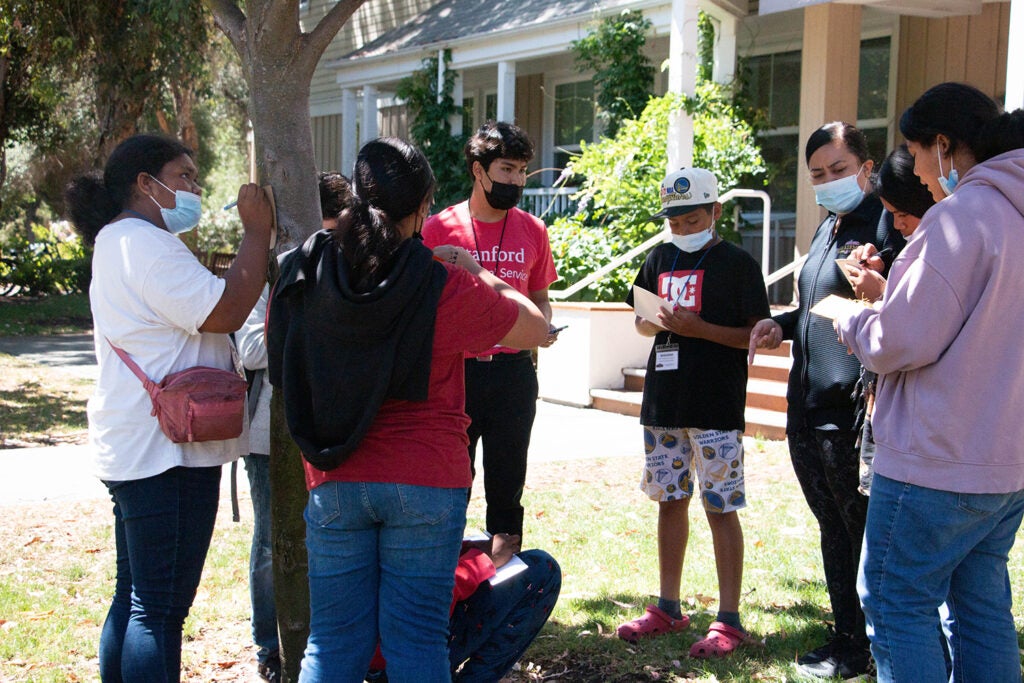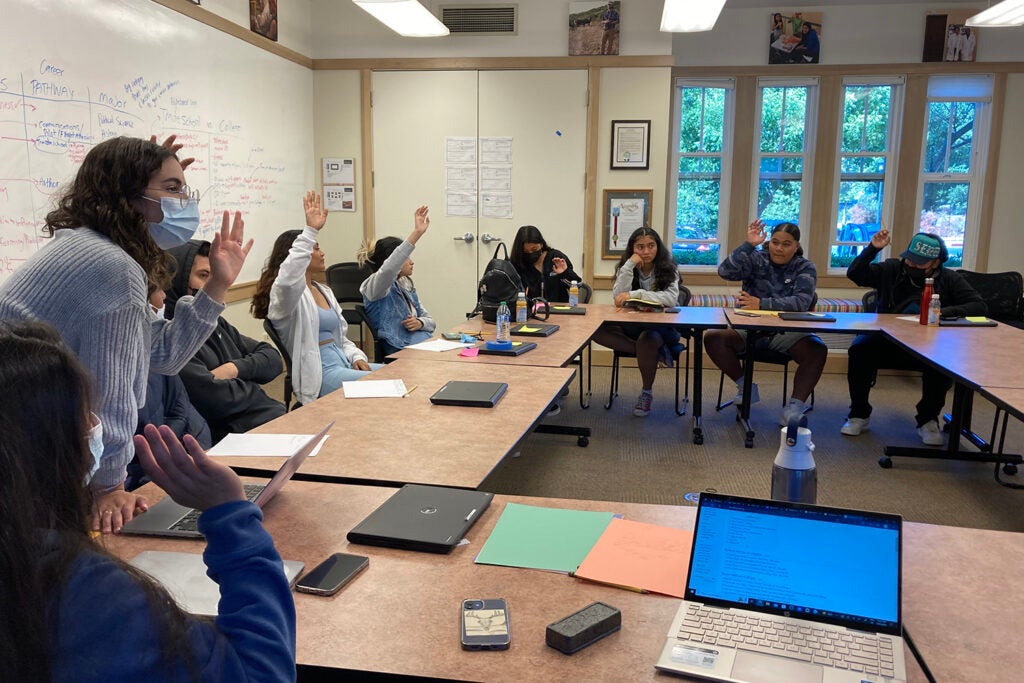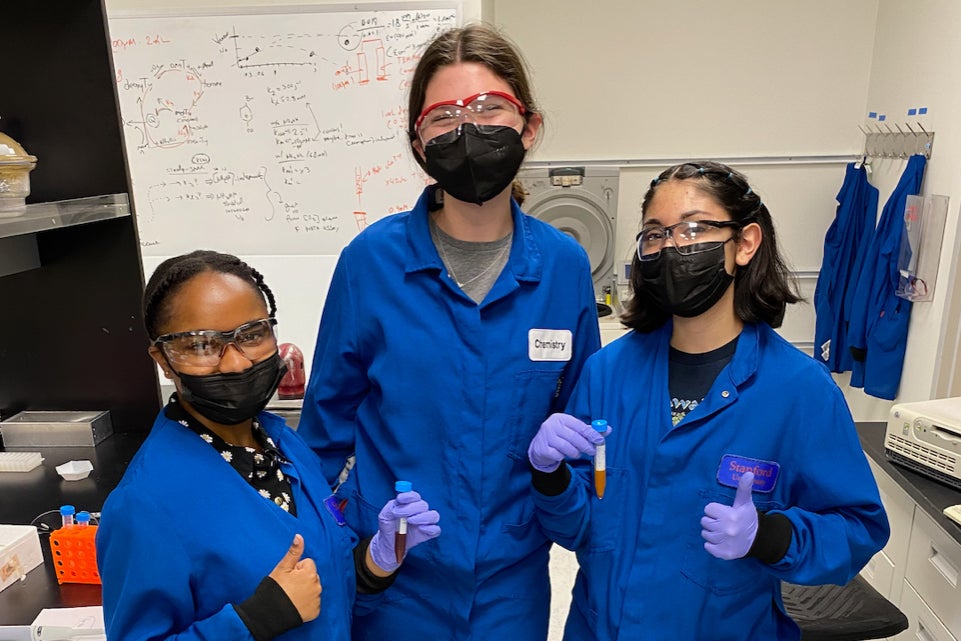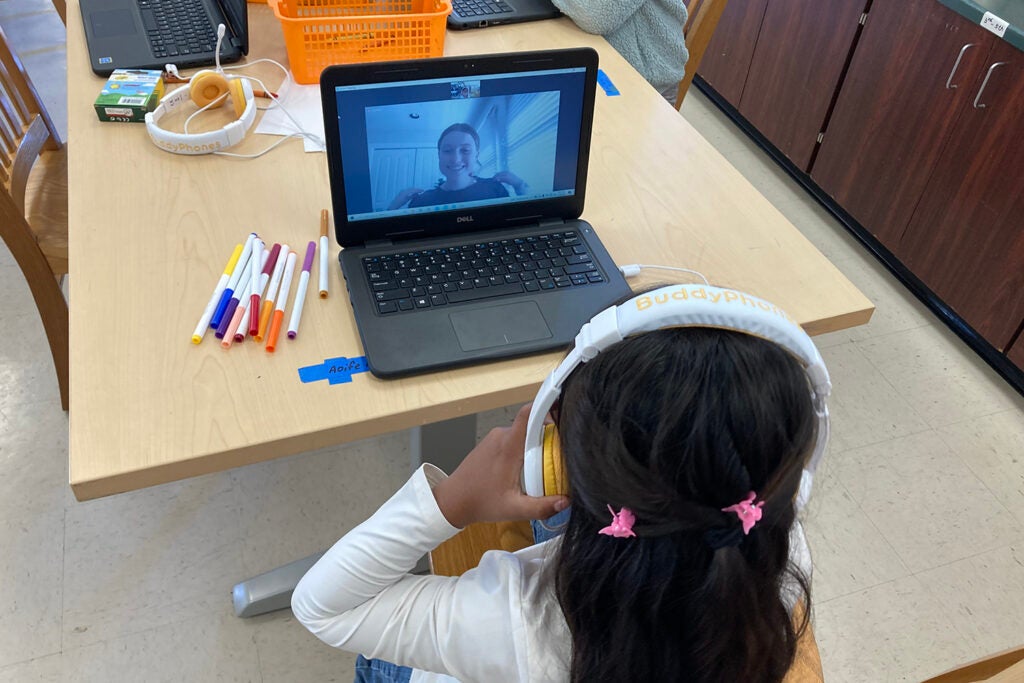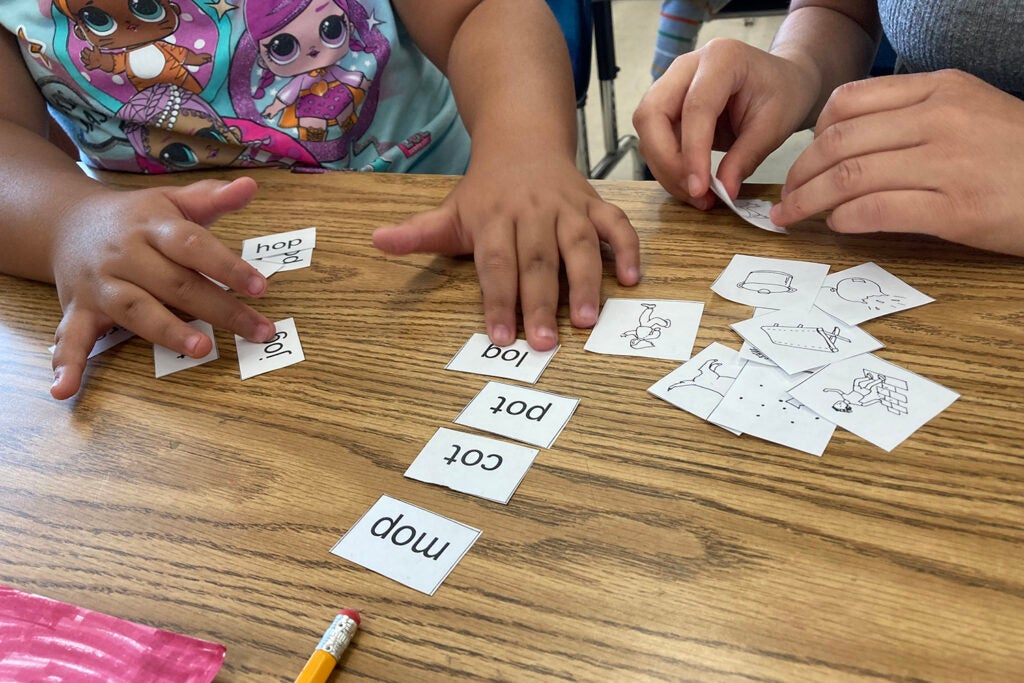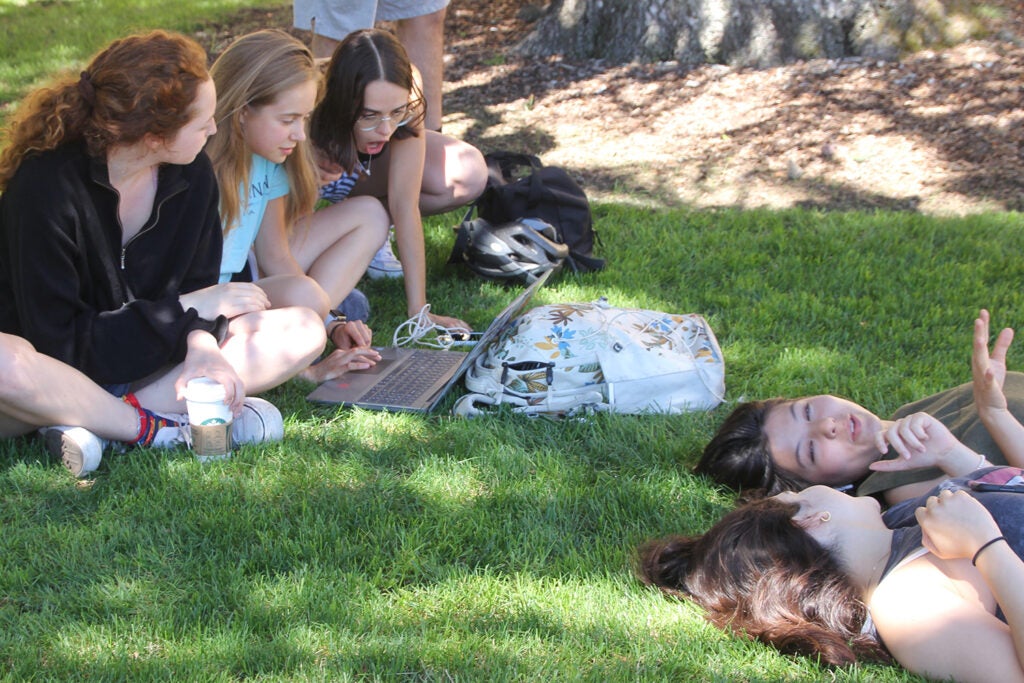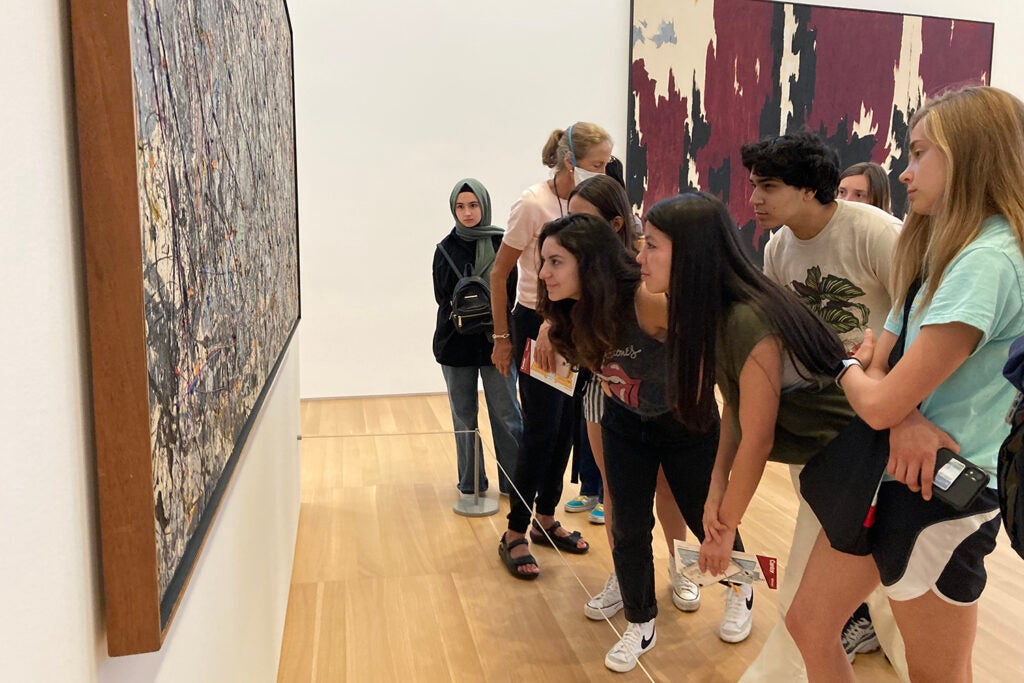Summer outreach programs for local students return in person
From doing lab work to learning vowel sounds, elementary through college-age students had opportunities to stretch academically and connect face to face.
The impact of the COVID-19 pandemic on summer programs that were canceled or forced online was keenly felt by Stanford’s free programs and service opportunities for supporting local students.
This summer marked the return of many such in-person programs, while new and retooled virtual programs, such as the new Stanford Middle School Scholars Program, benefited from lessons learned during the pandemic. In a variety of programs taking place all around campus, students in grades K-12 and beyond had the opportunity to stretch academically, work with tutors and mentors, and get their first taste of scientific research.
“So often, students hear that they need experience before they can be accepted into a lab, but how are they to gain that experience if they aren’t allowed in?” asked Jill Helms, who runs the Science, Technology and Reconstructive Surgery (STaRS) internship program and is a professor of surgery in the School of Medicine. Now in its 19th year, the STaRS program prioritizes students from underrepresented communities, first-generation college aspirants, or those from low-income backgrounds who are interested in the fields of stem cell biology, regenerative medicine, and biomedical research. The STaRS program tracks participants into college, Helms said, and many of them come to Stanford.
From high schoolers exploring post-graduation pathways to incoming first-graders learning the building blocks of reading, here’s a peek at what the return of Stanford’s academic programs for the broader community looked like this summer.
Preparing for transition
Moisés González De La Rosa, ’25, (in black mask), who worked with 6th-8th graders this summer through the Haas Center Education Partnerships Summer Fellows program, guides Cesar Chavez Ravenswood Middle School students through a reflection exercise outside the Haas Center for Public Service. The students were part of the East Palo Alto Stanford Academy (EPASA), a Haas Center program designed to build social awareness and develop the skills and strategies needed for high school.
Exploring possibilities
Students from Menlo-Atherton High School and other area high schools engage in a wide-ranging conversation about career and college pathways at the Haas Center for Public Service as part of the High School Support Initiative (HSSI). Stanford students including Mirelys Mendez-Pons, ’25, (in blue mask) facilitate such discussions as part of their work as Education Partnerships Fellows (EdP). A key aspect of the program is to support high school students by affirming their interests while introducing them to new ideas, said Priscila Garcia, who directs the program.
Getting on a research wavelength
Anisa Blackmore and McKenna Brosnan, rising seniors at Carondolet High School in Concord, and Sophia Marogi, a rising junior at James C. Enochs High School in Modesto, get ready to measure solutions of water and metal complexes on their first day in the Solomon Lab. They were learning to use UV-Vis Absorption spectroscopy to see what wavelengths of light the metal complexes absorb in order to understand why different metal complexes have different colors, explained Dory DeWeese, Stanford mentor and graduate student.
Inspiring Future Scientists through Shadowing (IFSS) is a two-week program that offers a glimpse into academic research for local students who may not have the opportunity otherwise, and prioritizes students from communities that are underrepresented in the field of chemistry.
Connecting with reading
Tutor Aoife Hernon greets Beatriz Ramírez, a rising first-grader, at the beginning of a remote tutoring session at Belle Haven Elementary School. The program was run by Ravenswood Reads as part of the Ravenswood City School District’s summer program. Students met one-on-one with the same tutor throughout the four weeks of the program, which combined in-person and remote tutoring sessions. Lessons learned during the online program in the spring helped the virtual sessions go more smoothly.
“The ‘Buddy’ headphones with mics solved a lot of things” because the tutors could hear their tutees better and interact naturally, said Isobel Nairn,’23, the remote site leader. “The students were connected with their tutors and had strong relationships. Sometimes I’d say, ‘Your tutor is sick, so there’s a substitute tutor,’ and they’d say, ‘But I love my tutor!’ ”
A rising first-grader and her tutor work on an exercise to learn the short “o” vowel sound in the Ravenswood Reads program. The Haas Center for Public Service and the Stanford Graduate School of Education have run the program, which connects Stanford students with elementary schoolers for tutoring in language and literacy skills, for more than 35 years. New to this summer’s program was a research component led by Associate Professor Rebecca Silverman that studied text-message and other communication between teachers and parents in an effort to see what might best support reading development.
Picturing biomedicine
Intern Clara Quintana gasps as Lauren Menke (center) shows her and Hannah Wagster (left) an online program called ImageJ, which gave them a new way to quantify the passageways of bone, called canaliculi. Meanwhile, Paulina de la Garza and Romanée Kobelt relax on the lawn outside the Cantor Museum. The five were part of the Science, Technology and Reconstructive Surgery internship (STaRS) program for high school and college students who come from underrepresented communities in the sciences, as well as from a handful of countries whose climates are not conducive to their pursuing STEM interests, said program director Jill Helms. This summer’s interns were chosen in 2021 but the advent of the Delta variant scuttled plans until 2022.
STaRS interns lean into Jackson Pollock’s 1947 painting, Lucifer, after Anderson Collection docent Mary Cafiero explained the artist’s experimental “action-painting” methods, pointing out that his cigarette was embedded in the canvas and asking them to figure out the order in which the paint was applied.
“It is really nice having a docent to point out all of the little things that I would otherwise not notice,” observed Menke, a rising sophomore at Case Western Reserve University, who spent the first part of her internship learning how to section and stain tissue, capture and quantify magnified images, and perform statistical analysis before getting assigned to a project looking at bone development. “Some of the modern art pieces reminded me of what it looks like to see stained tissues under a microscope.”
